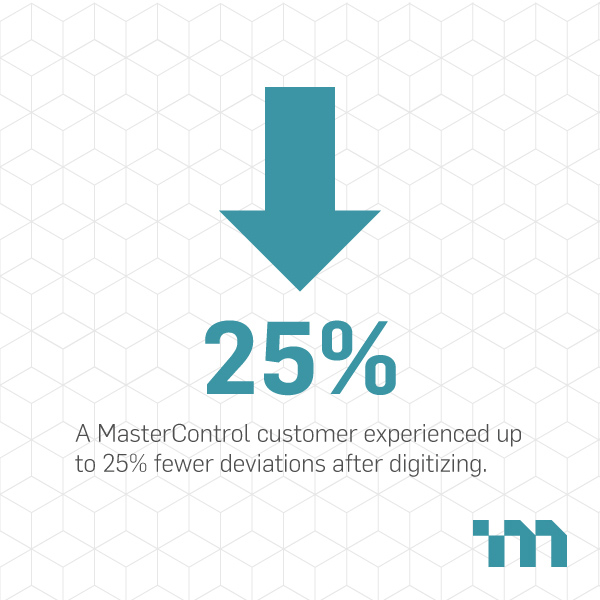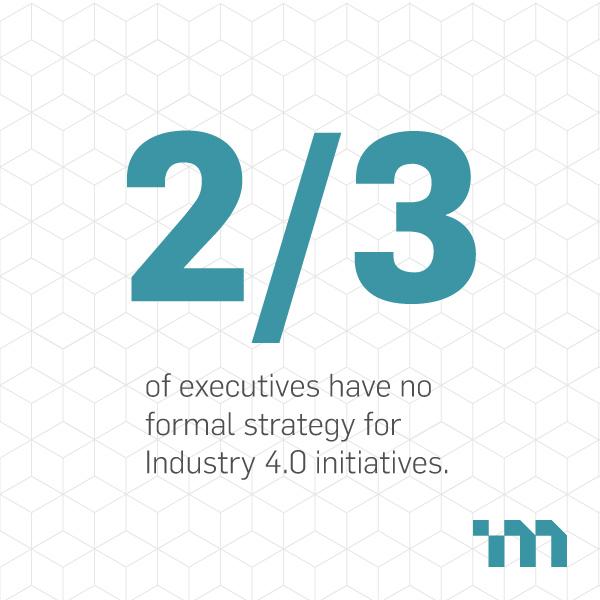The key to lean manufacturing is using artificial intelligence/machine learning initiatives to make data-driven decisions.
By Terrance Holbrook, director of product at MasterControl
Two of the biggest advancements in manufacturing are lean manufacturing and big data. While these are complementary concepts, they’re difficult to achieve without the right tools. The problem arises when trying to make data-driven decisions. In most cases, data is so scattered throughout an organization that it’s hard to aggregate it all and get a complete picture of what’s going on. Without all your company’s data, you’ll never achieve lean manufacturing because your decisions will be based on false assumptions.
If your data is all in the same place, you’ve taken the first step toward using predictive/prescriptive analytics and artificial intelligence (AI) in your manufacturing. Decisions based on this data will help you achieve lean manufacturing, reduce errors in your processes, and increase performance and profitability.
Many great ideas sound very simple until you try to implement them. The whole idea behind lean manufacturing is reducing waste while increasing productivity. That sounds straightforward, but the problem becomes identifying what is “waste” and what is, in fact, essential. For example, if you tend to have excess inventory of a particular product, you may decide to decrease production. That makes complete sense. However, determining how much to reduce is the problem. Using data from your manufacturing line can give you the answer you need to get production to the ideal amount.
Even with limited analytical capabilities, you can still make changes that’ll cause big improvements. One example of this is if you want to change something on your production line. Many manufacturers would use a trial-and-error approach, making the change and then observing the results. There are a couple of problems with this. It can take a while to determine the best way to make the change, and the results aren’t necessarily related to the change you’ve made. It’s a classic case of correlation not necessarily equaling causation. Predictive and prescriptive analytics remove the guesswork.
 Lean manufacturing focuses on types of waste, and AI can help you understand what constitutes waste in your organization and how to reduce it. For example, defects are a major source of waste and are the antithesis of right-first-time manufacturing. Basic analytics can tell you which defects are occurring on which lines and at what frequency. A fully integrated electronic production record system by itself can lead to as much as a 25% drop in deviations. However, AI can make you even more efficient.
Lean manufacturing focuses on types of waste, and AI can help you understand what constitutes waste in your organization and how to reduce it. For example, defects are a major source of waste and are the antithesis of right-first-time manufacturing. Basic analytics can tell you which defects are occurring on which lines and at what frequency. A fully integrated electronic production record system by itself can lead to as much as a 25% drop in deviations. However, AI can make you even more efficient.
Machine learning (ML), a subset of AI, gets its name because it learns from data. The program analyzes which factors lead to defects and the best way to avoid them. Right-first-time manufacturing is achievable without ML, but by using it you can get your manufacturing right the first time, every time. Getting performance up to this level helps you move on toward operational excellence.
Operational excellence and lean go hand in hand. Lean principles should improve performance and profitability, which is the basic concept behind operational excellence. Of course, performance and profitability aren’t limited to the manufacturing department. True operational excellence requires companywide initiatives that connect the organization and your entire supply chain.
While many companies start out to achieve operational excellence, the realities of operating with outdated systems eventually slow them down and the momentum dies out. When your company is just barely keeping up as it is, it’s difficult to find the time for improvement. This is why any move toward AI needs to begin with small steps. Lean, right first time, and operational excellence in manufacturing aren’t steps to a process. Any progress you make in one is going to help the others.
 A good first step toward big data is centralizing your data. Start by investing in software systems that integrate or are all on the same platform. Many software as a service (SaaS) vendors offer a wide range of solutions to connect your organization from product development to postmarket surveillance. Getting everyone on connected systems, compiling your data and analyzing it are the first steps to bringing AI to your organization and achieving lean manufacturing.
A good first step toward big data is centralizing your data. Start by investing in software systems that integrate or are all on the same platform. Many software as a service (SaaS) vendors offer a wide range of solutions to connect your organization from product development to postmarket surveillance. Getting everyone on connected systems, compiling your data and analyzing it are the first steps to bringing AI to your organization and achieving lean manufacturing.
These and other digital transformation initiatives that drive Industry 4.0 are key to surviving in a competitive manufacturing landscape. The vast majority of executives recognize this, but few are seriously taking strides to improve in this area. Fortunately, that means those who do plan out a comprehensive strategy will lead the industry.

Terrance Holbrook
About the Author
Terrance Holbrook is the director of product at MasterControl, where he is responsible for market research, product design and development of functionality for MasterControl’s full suite of solutions. He has 25 years of experience in manufacturing and seven years of experience in international medical device development. Holbrook has led the AI/ML development for Fortune 50 companies, launched over 400 products and hosted FDA inspections and mitigations, ISO certifications, and international registrations. Holbrook holds patents on risk-based upgrade and validations and has four patents pending. He has a bachelor’s degree in business administration from Purdue University and an MBA from Westminster College.
Scott Ellyson, CEO of East West Manufacturing, brings decades of global manufacturing and supply chain leadership to the conversation. In this episode, he shares practical insights on scaling operations, navigating complexity, and building resilient manufacturing networks in an increasingly connected world.